Sunrise, sunset…
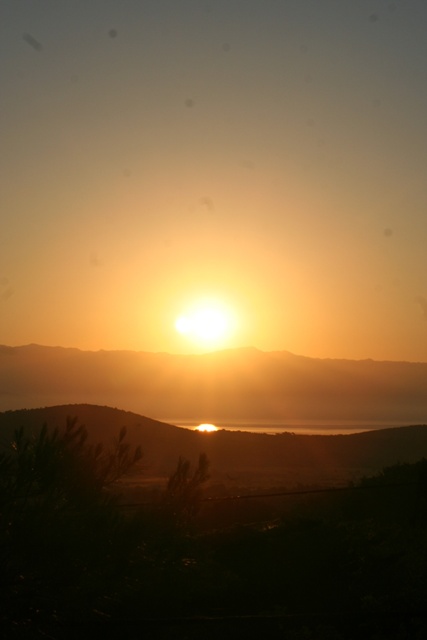
This week: Thinking of Pringles: Hooray for Henry: The annual migration ; Harvest time ; Shriking its head off; A failed experiment; Sunrise, sunset…;
Thinking of Pringles®
Sometimes I get asked interesting historic police motorcycle questions. Things like “What radio is fitted to this bike?” and recently “What size were the ‘police’ signs and number plates in curved motorcycle windscreens?”.
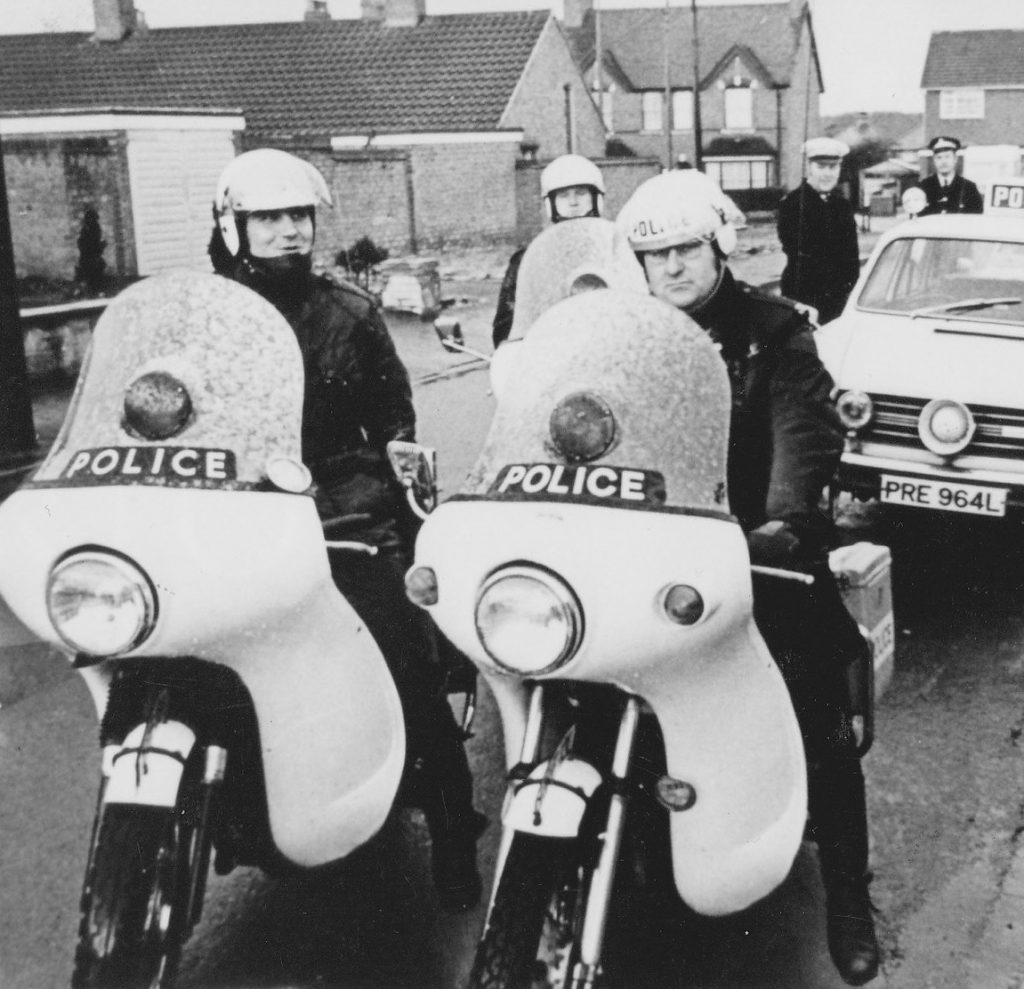
So the clue here is in the mention of number plates and windscreens. That immediately dates the ‘bike in question to no later than 1st August 1975, when the requirement for visible front registration marks on motorcycles was removed in the UK.
It also means motorcycles with fairings made by Avon until the company went into liquidation in 1971, and then by Rickman Brothers of New Milton, who took on many of the skilled Avon staff.

I have a number of examples of original screens both with the cutout for the Lucas L724 blue light, or just a plain blade.
These screens are masterpieces of design, being curved in two directions, to aerodynamically shield the rider from the elements, flies, wasps, dust and debris. Whilst at the same time when riding in inclement weather, to shed precipitation sideways, away from the rider rather than up over the top of the screen, to arrive at eye level. Not a good idea.
To imagine the shape, think Pringle®, that double curved, deep fried snack made of potato starch, every one a standard size so they neatly stack together.
With less exaggerated curves, but of the same design, windscreen blades were made of perspex and will also stack together. This shape is known as a truncated hyperbolic paraboloid, or a negative gausian curve. But what size were the windscreen signs?

Fortunately I have a number of photographs in my collection showing these signs. Depending on the fairing being used, the positioning of the front registration marks could be on the side of the actual fairing, on a flat panel built into the fairing front above the headlamp, or as traditionally mounted, on the front mudguard. These latter style of metal number plates were known as “Pedestrian Cutters”.
Until 1968, front and rear number plates were white or silver letters on a black background. Then as new materials became available and safety became a consideration, reflective number plates, white to the front and yellow to the rear were allowed.
From 1st January 1973 reflective number plates became compulsory for all new vehicles. These early plates were raised black plastic numbers and letters placed in pre drilled holes in a reflective background plate, then fixed in place. Later this was changed to a bonding system where the registration was bonded under a clear plastic plate, so they were sealed in place.
More recently, number plates must carry the makers name, BS kite mark and a serial number so they can be traced back to the company who produced them. But I digress…
If you have ever tried sticking a straight, flat piece of paper to a curved surface, you will see the problem. Without cutting gussets, or using a material that stretches, you will not be able to do it. However, if you can describe geometrically the shape, you can have your registration mark made.
I had a partial answer to the question, I knew the required size of the letters and numbers, based on the legislation of the time, but I needed to some 1:1 scale experimenting to get the size and shape right. With a lot of heat at mid-day, it was a good time to experiment.
Using a length of kitchen cling film I first wiped over the inside of the blade with a damp cloth, then spread the plastic film along the bottom, using the centre hole as a guide. The damp surface makes the plastic film stick better.
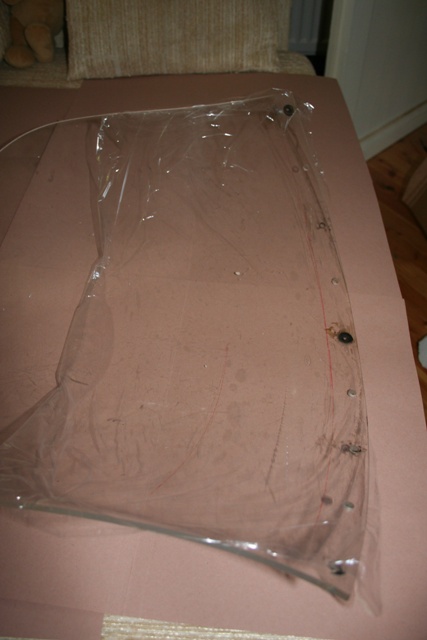
The plastic film readily moulds to the gaussian curve and smoothing air bubbles away to the edges means the film is completely flat against the parabolic curves.
I put a marker pen into a set of compasses and drew it along the edge of the blade, marking first the lower, then the upper limit of the number plate.
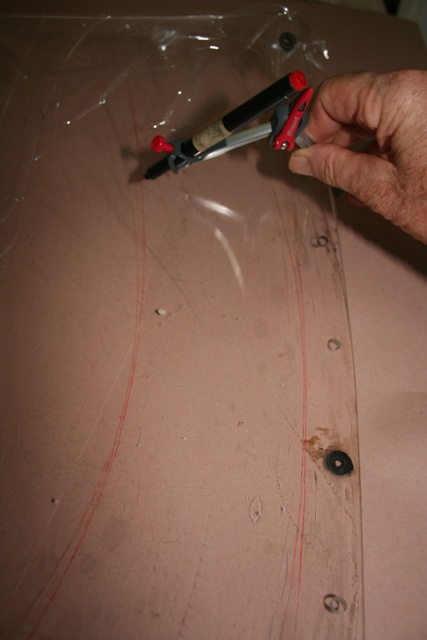
Next I used an A4 flat bed scanner. Gently peeling the plastic film off the screen, I laid it onto two sheets of A4 paper because it is too long for a single sheet, then scanned each one in turn.
Using a graphics programme (CorelDRAW) I imported the two drawings. Centring the two A4 scans using the marks on the line was easy. I then used various tools to replicate the scanned lines, validate the accuracy and create the shape of the decal I need to go inside the screen.
The last job was to use a typeface with the correct dimensions, to create the required registration number. It was not until 2001 that a specific typeface was mentioned in regulations. The law at that time just said the numbers and letters had to be clearly visible.
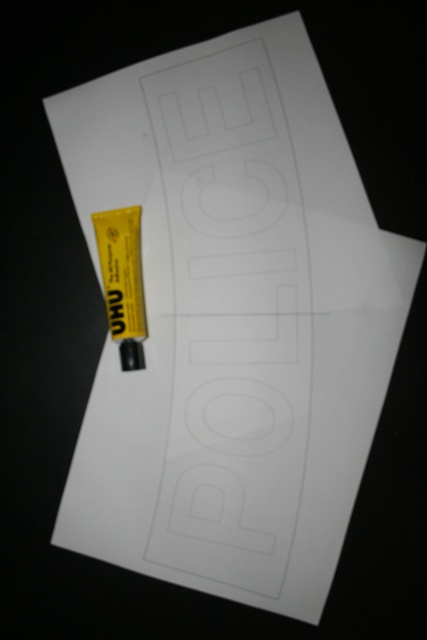
Finally I printed out the shape, carefully cut round it and tried it in the windscreen. A perfect fit, so I was able to pass the measurements on to my questioner.
Hooray for Henry
My ornithologist neighbour Steve was phoned this week by someone in Stari Grad, to say they had found a young Hoopoe and could he take it as it wasn’t eating.
He did. He built a small cage and has had it in his Konoba for two days. The Hoopoo is another of the regular summer visitors to the island.
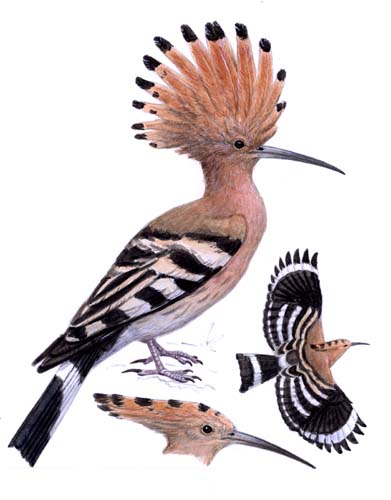
This is a distinctive bird with a long, pointed beak, a chestnut and black striped head crest and black and white striped wings.
The Hoopoe is mainly a terrestrial feeder, using it’s long and powerful beak to probe into soils for insects and grubs.
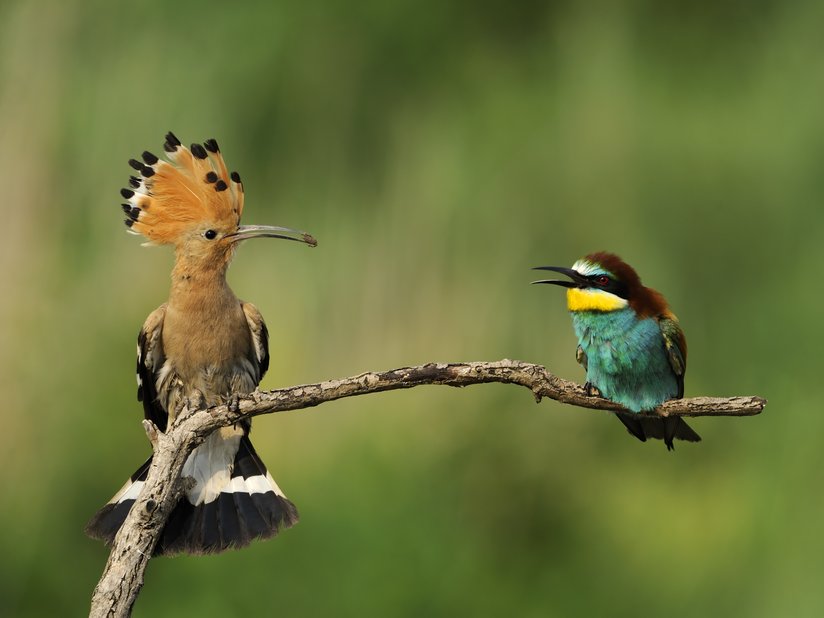
Their diet is mostly large insects and their larvae and pupae, also small vertebrates: lizards, snakes, frogs, and geckos. They usually forage alone, or pairs feed in close proximity.
This was quite a young bird that was unable to fly, but by Tuesday morning, it had built it’s wing strength and was making ‘circuits and bumps‘ in the Konoba.
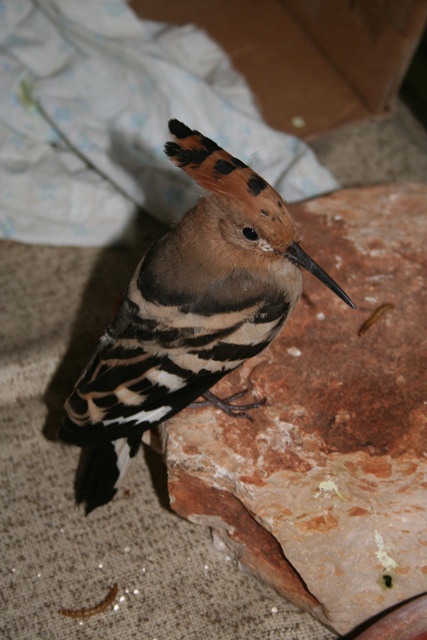
Steve took Henry down to the Dračevica where there are others of the species, and was delighted when he flew up and away. He watched Henry disappear off into the distance through binoculars.
Shriking its head off
My habit is that every evening I have a walk round, locking up before retiring for the night. On Tuesday, as I passed the water butt, I glanced inside and a pair of dark eyes were looking up at me. I stopped and looked more closely.
There was a drenched and bedraggled fledgling that was standing up to its haunches in the brackish water at the bottom – I’m using the water for irrigation. With a black mask and piercing eyes it looked rather like an avian bandit.
He didn’t object to being picked up, but then proceeded to attack any finger within range of his extremely sharp beak. I took him straight round to my neighbour Steve.
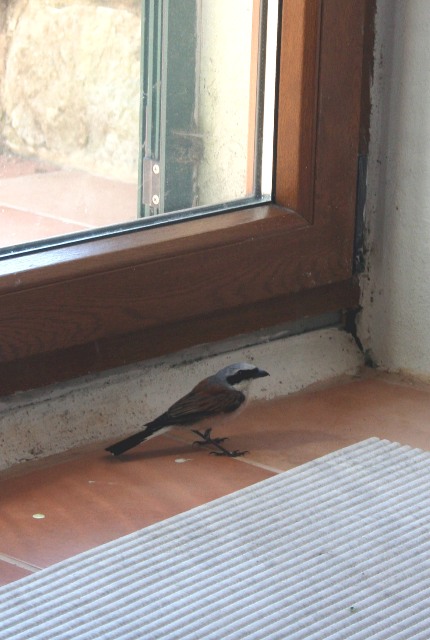
This is a Red Backed Shrike, another of our regular summer visitors. With the signature black mask, they are the passerine equivalent of the Raccoon, and equally viscous.
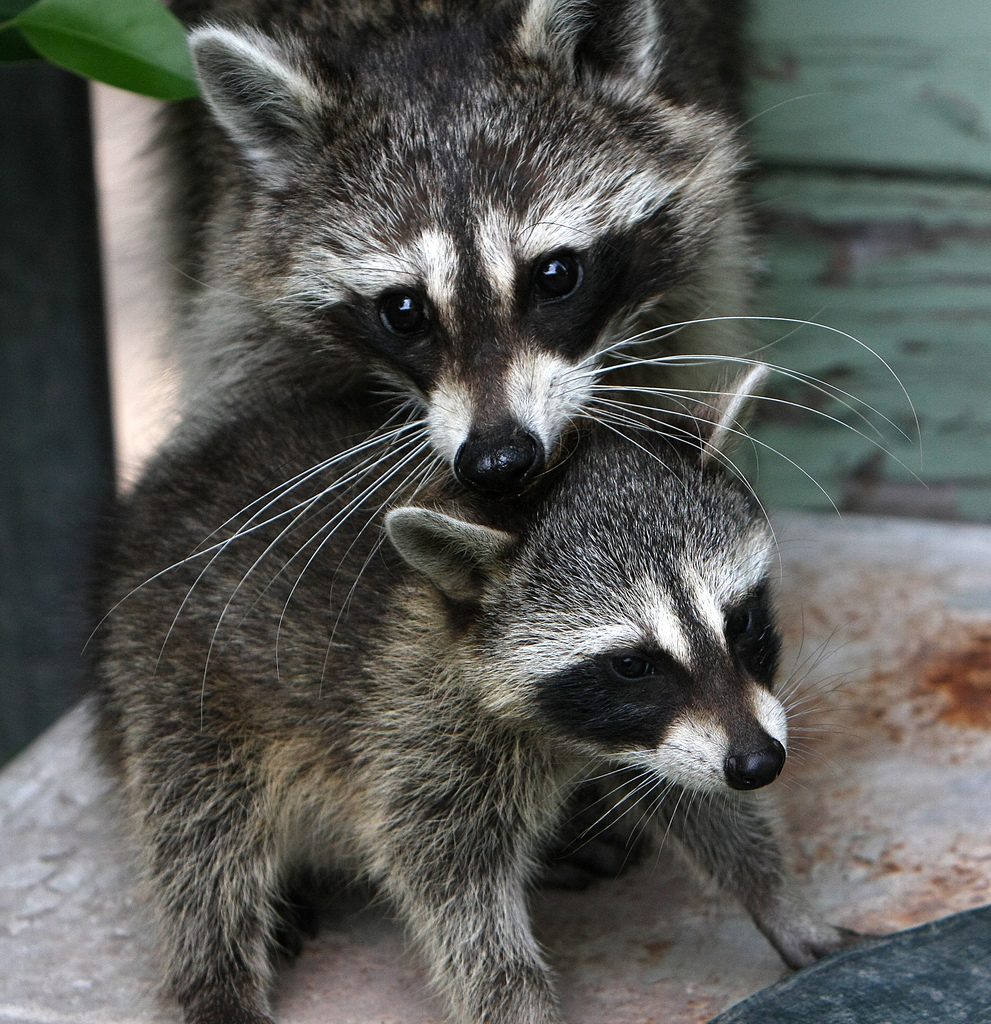
Known as the “butcher bird” they use thorns and barbed wire to impale their prey, and to create a larder of insects and small reptiles. I can certainly vouch for the sharpness of his beak.
There are large numbers of these birds around Doll. I see them on the overhead electric wires, but notably on branches of my Pomegranate tree, where they dart out, grab an unlucky flying insect and return to the perch. Sometimes beating it to remove the sting, other times, swallowing their prey whole.
Their call is distinctive, variously a shrieking alarm call, or a long melodic tuneful call. The males have the black mask, a russet back and pale mushroom grey chest and collar.
This little guy had only just fledged, the point when the parents abandon their brood, and clearly got into difficulty in the water. He was allowed to dry out overnight, fed on a supply of mealworms, and by morning was flying and looking longingly out of the window.
Just after nine, we released him and he immediately flew off into the trees. I hope to see him back next year.
The annual migration
I’m both curious and in awe of these tiny birds, indeed all birds who migrate huge distances twice each year between their winter quarters in sub-Saharan Africa and their breeding sites across Europe.
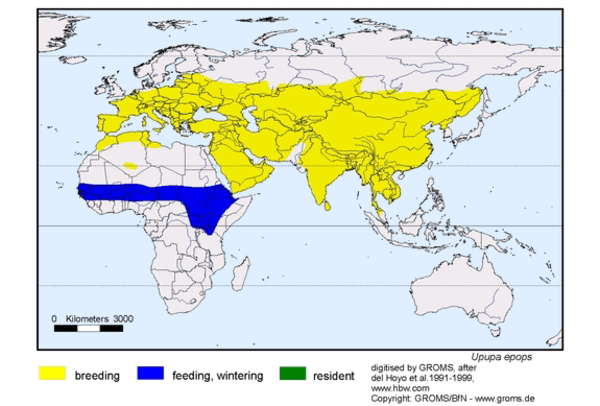
I wonder if the birds return to the area of their birth to breed? Will we see the same Shrike and Hoopoe back here in Dol next year? No one locally rings birds, so there is no way of knowing.
It is possible to track migratory birds. What was once the preserve of the largest raptors, as technology, especially battery and PV technology improves, so it has become possible to attach tracking devices to smaller birds.
Watching migrating Cuckoo’s from the UK via the Cuckoo Tracking website has been possible for some years. But now with a solar powered transmitter weighing just 2 grams being available, it is possible to attach one to significantly smaller birds.
There is much that we don’t know about the lives of our avian friends. In the past when specialists placed rings on the legs of birds, it relied on the ring being found, often after the death of the bird, and the details of where and when it was found being passed back to the ringer.
So there was a start point where the ring was placed on the bird’s leg, and the finish point when it was found after death, but little in between information.
In 2019, ringing still takes place, but the attachment of a tiny solar powered transmitter means that satellites can listen for and report the signal, albeit not in real time like a heavier GPS transmitter will, but none the less the movements of even these tiny migrants can be monitored, so improving our knowledge of their annual continental wanderings.
Harvest time
My plums are ready. And the Apricots too. This year the Apricots have been attacked by an insect which has drilled into the fruit to lay an egg. It hasn’t compromised the crop, just leaving blacks spots outside and I have to remove a caterpillar from the inside of each one.
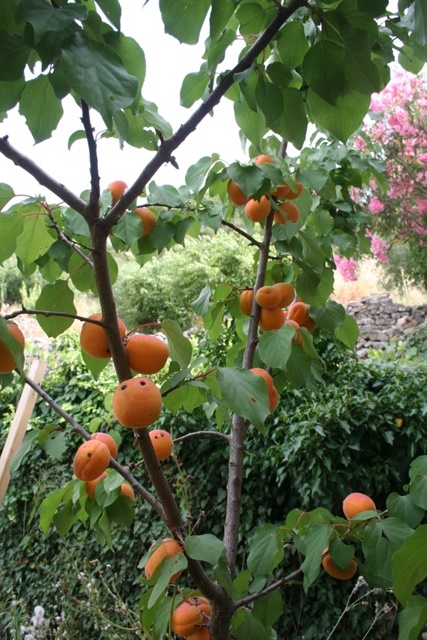
My yellow plum, known as Zemzeya in dialect have been dropping for a while, but it has been picking time this week. This is an old tree with a girth of more than a metre that I need a ladder for, to pick the crop.
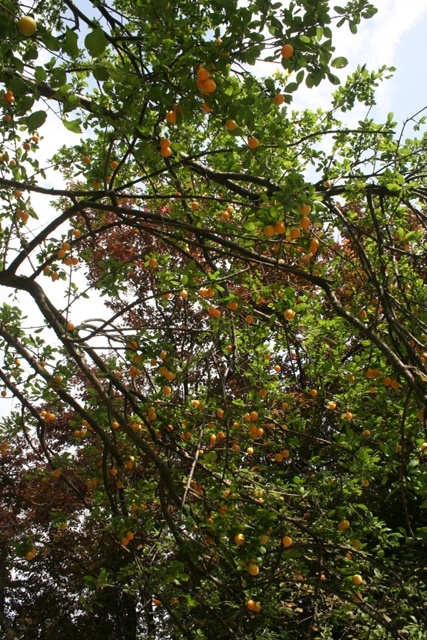
There are more than I can ever use, so I give some to neighbours.

The rest are bottled in Kilner jars, in the old way, to preserve them for the winter. I can smell the plum crumble already!
There are a few raspberries ready too, but surprisingly, given the amount of rainfall we had in the spring, it is not a very good crop. Still there are enough to pick for breakfast every day.
A failed experiment
I have cut down two of my hydroponic tomato plants this week. Not that they were dead or anything, the opposite in fact. They had reached the ceiling of the greenhouse, but although I have been giving them a litre of water everyday, with food mixed in, they have no tomatoes.

This was an experiment I reported starting back in February. I researched varieties of tomato for this kind of growing, but there seemed to be no special varieties, so I just planted what I had.
The two cherry tomato plants have produced fruit, but the standard tomatoes have had flowers but they have all dropped off.
Not every experiment of mine is a success and although I read as much as I could before starting, clearly something is not right. I suspect it is the variety because they have grown and spread, even after the shoot tips have all been pinched out.
But at least I know that the cherry tomatoes are OK. I will look for other varieties to try. Thompson & Morgan have a tomato variety selector chart, although they don’t mention hydroponics. I think I’ll email them an ask.
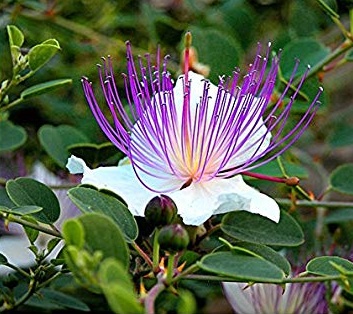
My photo last week of the Caper flower raised some interest. The bushy plants are found growing rather like weeds, in old walls and abandoned terraces, as well as on soil.
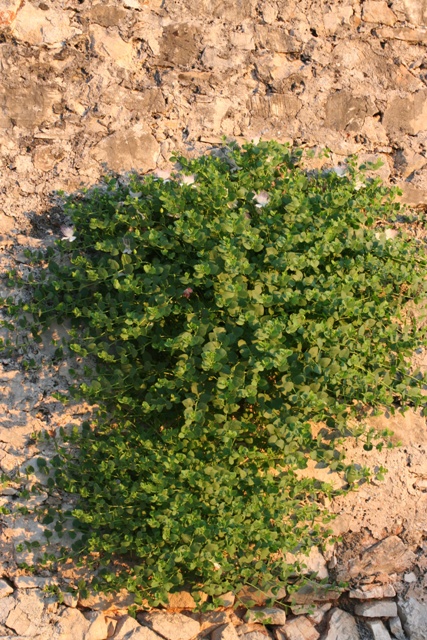
The buds are the capers that you buy in a jar in the supermarket.

But the flower, which becomes the seedpod is also eaten as part of the Mediterranean diet, and is known as the Caper Berry.
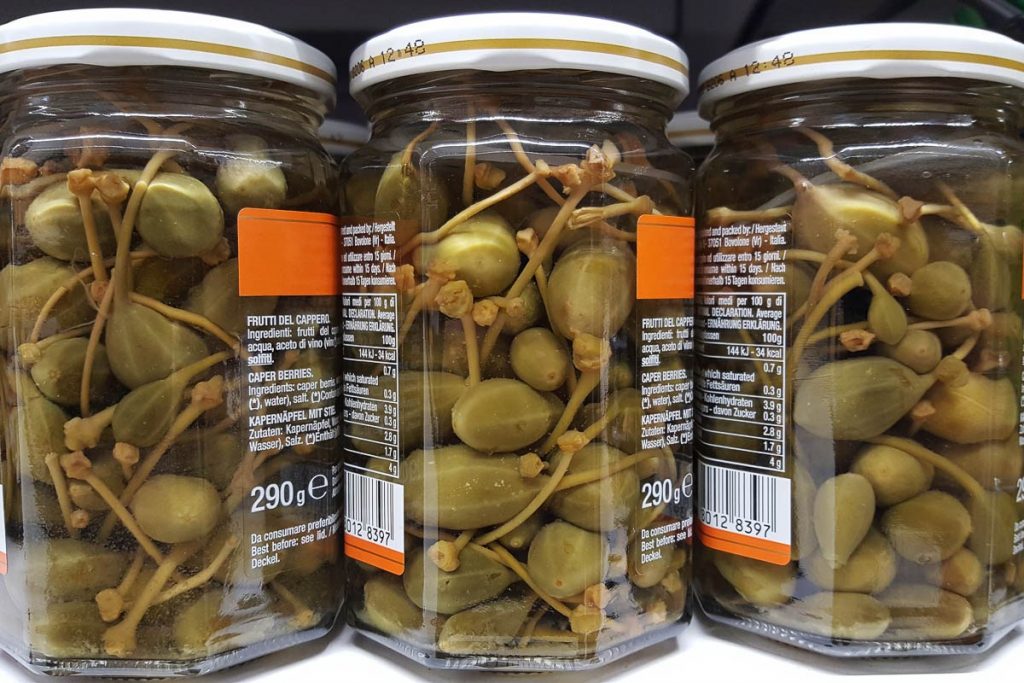
They are probably a plant that you should try, and depending where in the world you are, in a pot, greenhouse, or if you are lucky, outside in the garden. The flowers only last for a day, but they are still worth growing.
Sunrise, sunset… Sunrise, sunset…. Swiftly flow the days…
Friday was the northern Summer Solstice, the longest day in the northern year.
I was up early and wandered along the dewy path up to St Michael’s Church to watch the first rays of the sun climb above the Dinaric Alps, above Makarska.

There were cobwebs everywhere and since I last trod the old donkey track, the grasses have grown undisturbed and few if any people have passed by along the green lane.
It does not seem like six months ago that I was in the same spot, to watch the first dawn of the New Year. I was reminded of the song from Fiddler on the Roof, with its lyrics “swiftly flow the days…. Swiftly fly the years…”
At 05.27 the first diamond of the rising sun appeared from behind the distant mainland mountains. Quickly everywhere was flooded with warm sunlight.
The sun lit up the church spires in Stari Grad – which in Croatian means “Old Town” – in a warm pink light and all around the world was waking for another day, but the only sounds were of nature.
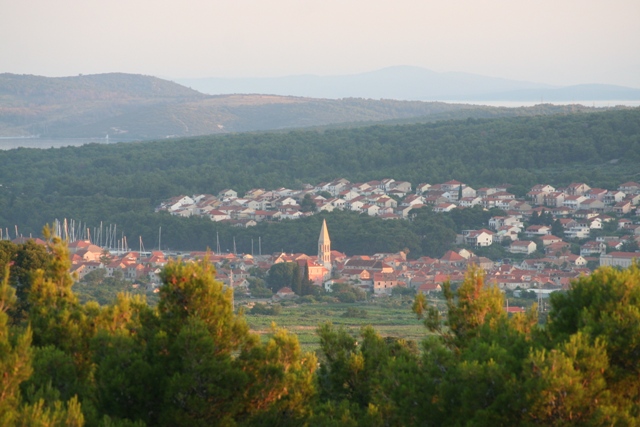
No human made noise intruded on the scene. A Cuckoo was calling nearby, Swifts and Swallows were out catching their breakfast and the bees were already busy on the Lavender. The strident call of the Golden Oriole echoed from the Maquis.
On the way back home, I stopped to pick some small sedges to plant in the garden – anything to break the monotony of the ever present weeds! The sun was still low and was shining through the trees of the Maquis, illuminating the old walls. And there has been yet more damage to walls close to home caused by the Wild Boar, who root for food.

With a gin clear sky, the longest day was hot. The sun is over 70º high at our latitude at solar noon, so little surprise that the temperature in the shade was close to 33ºC. We are 55 minutes ahead of solar time, in the summer (CEST).
By early evening the temperature had cooled to 29ºC as I took the path again up to the promontory where St. Michael’s Church stands. From the graveyard there is a panoramic view across the Stari Grad agar to Brač, and from the Dinaric Alps in the East to the blue Adriatic and the coast of Italy just over the horizon in the west.
From here you can see the setting sun dip into the Adriatic. I still hope to see the green flash one of these days.
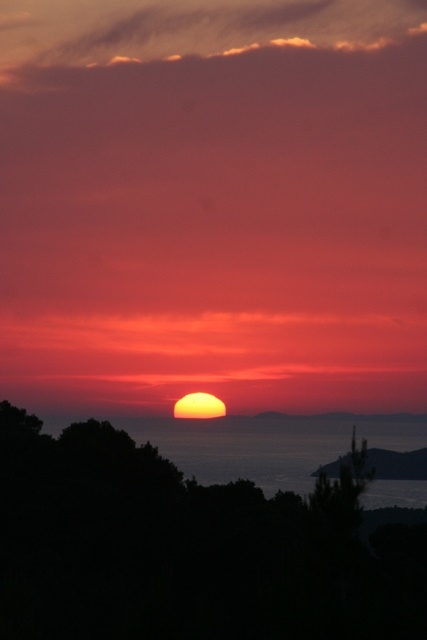
You can move around this 360º degree photograph, up, down, left, right, front and back…
Behind is St. Michael’s and the Maquis covered slopes and then the high limestone ridge which runs the length of the island. From this vantage point, on a clear evening, it is possible to see the lights of the Italian coastline, across the Adriatic.
3 Responses
carole
Loved the music ,Norman.
Andy Robinson
You certainly have a way with words Norman…. And the descriptions of the country are particularly apt as we were in the vicinity last week as you know. Excellent as usual….
Terry Hubbard
At the same moment in the evening I was on the slopes of Mount Etna. An equally magnificent view Norman. I would have attached a similar picture, if only I knew how. Nothing changes Norman. I always relied on you for the technical stuff!!!!